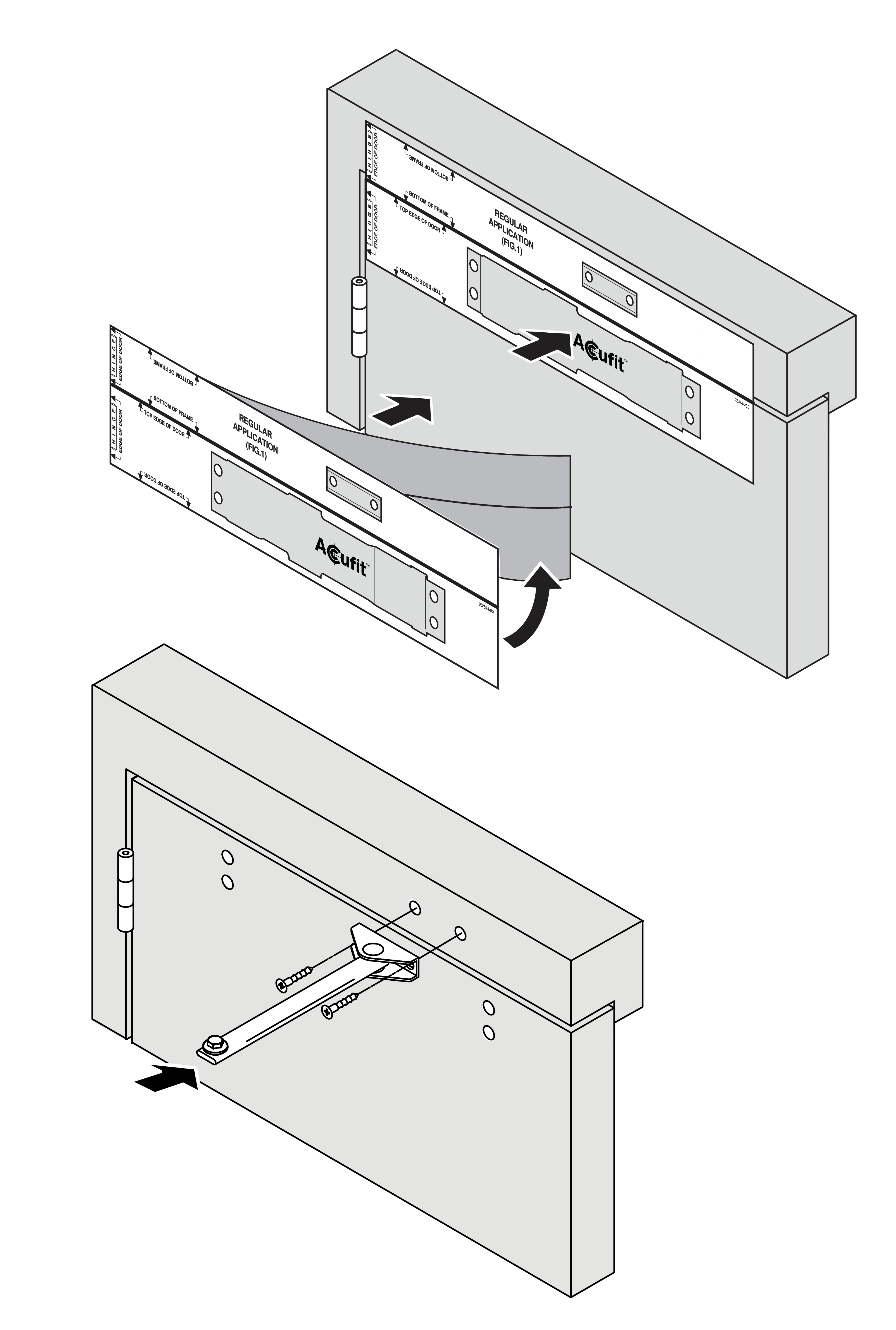
The performance and reliability of fire doors can be undone by inaccurate hardware installation. Karen Trigg of Allegion UK explains the significance of installer competence and how responsible persons should approach fire door hardware fittings to ensure lives aren’t put at risk
For a building to be considered fire safe, it must have functioning fire doors. As a crucial element of passive fire protection, fire doors are recognised as a legal requirement in non-domestic properties and houses in multiple occupation (HMOs), and as such, careful attention is frequently placed on standardised testing, specification and ongoing maintenance.
Perhaps less understood is the importance of accurate door hardware installation. Certified fire doors are tested with – and are reliant on – several components, including hinges, locks, latches and door closers. Though, where ironmongery products must be CE or Perhaps less understood is the importance of accurate door hardware installation. Certified fire doors are tested with – and are reliant on – several components, including hinges, locks, latches and door closers. Though, where ironmongery products must be CE or UKCA marked, Certifire accredited and tested under separate standards, there is less regulatory emphasis placed on fire door installation specifically. Should hardware be improperly or inaccurately fitted to a fire door, its fire-resistant capabilities become compromised, leaving buildings and its occupants at risk. Without functional hardware components, a fire door is rendered useless and, with the onus being placed on responsible persons, decision makers simply can’t afford to neglect any stage of fire door safety – including installation.

COMPETENCE AND COLLABORATION
Installation remains a pain point for the fire safety industry. Evidence suggests that incorrect installation is one of the leading causes of fire door failure, and despite a wave of regulatory framework updates in other areas, there still remains a level of ambiguity towards the proficiency required for fitting fire door hardware. As per the Fire Safety (England) Regulations 2022: fire door guidance, it is assumed that responsible persons possess evidence that the design, specification and installation of a fire door is adequate for its location. Section 6.7 of the legislation expands on installation further, stating that upon inspection, if there is any doubt that a fire-resistant flat entrance door has been replaced, the resident will need to confirm that the new fire door has been ‘installed by a competent person’. While it’s clear then that fire door installation is a critical aspect of our built environment, there is currently no legal requirement for fire door installers to possess a specific qualification or accreditation. For some, this presents a misconception that fire doors and their hardware can be installed by anyone – after all, how is ‘competence’ defined? But in doing so, decision makers are often risking fire safety compliance as a result, with unskilled individuals using incorrect fixing methods and stripping certified fire doors of their FD rating in the process. Where Phase 3 of the Building Safety Act 2022 looks to make it easier for enforcement authorities to act against non-compliance, responsible persons are urged to seek trusted, professional help when unsure – in the same way they would rely on qualified persons to assess and install a gas boiler, for example. Certified professionals can demonstrate the right skills, knowledge and experience when installing fire door systems and will remove any questions surrounding competence and compliance.
REDUCING THE GAPS During installation, decision makers must also look to follow manufacturer guidelines and fitting instructions. Door hardware products are often unique to the manufacturer, with distinctive components, fittings and fixing points, and as a result they should never be approached as like-for-like installation projects. Fire door integrity is frequently compromised by alignment issues and improper installation methods as a result of this knowledge gap. In many cases an appropriately specified and perfectly operational door closer device can be found ineffective, solely as a result of poor installation. Consequently, a fire door may not be able to latch or close fully from its standing position, leaving gaps large enough for smoke and fire to pass through in an emergency situation. With this in mind, it’s important for responsible persons to plan ahead, appreciating that door hardware installation is a specialised task.
REDUCING THE GAPS
During installation, decision makers must also look to follow manufacturer guidelines and fitting instructions. Door hardware products are often unique to the manufacturer, with distinctive components, fittings and fixing points, and as a result they should never be approached as like-for-like installation projects. Fire door integrity is frequently compromised by alignment issues and improper installation methods as a result of this knowledge gap. In many cases an appropriately specified and perfectly operational door closer device can be found ineffective, solely as a result of poor installation. Consequently, a fire door may not be able to latch or close fully from its standing position, leaving gaps large enough for smoke and fire to pass through in an emergency situation. With this in mind, it’s important for responsible persons to plan ahead, appreciating that door hardware installation is a specialised task.


